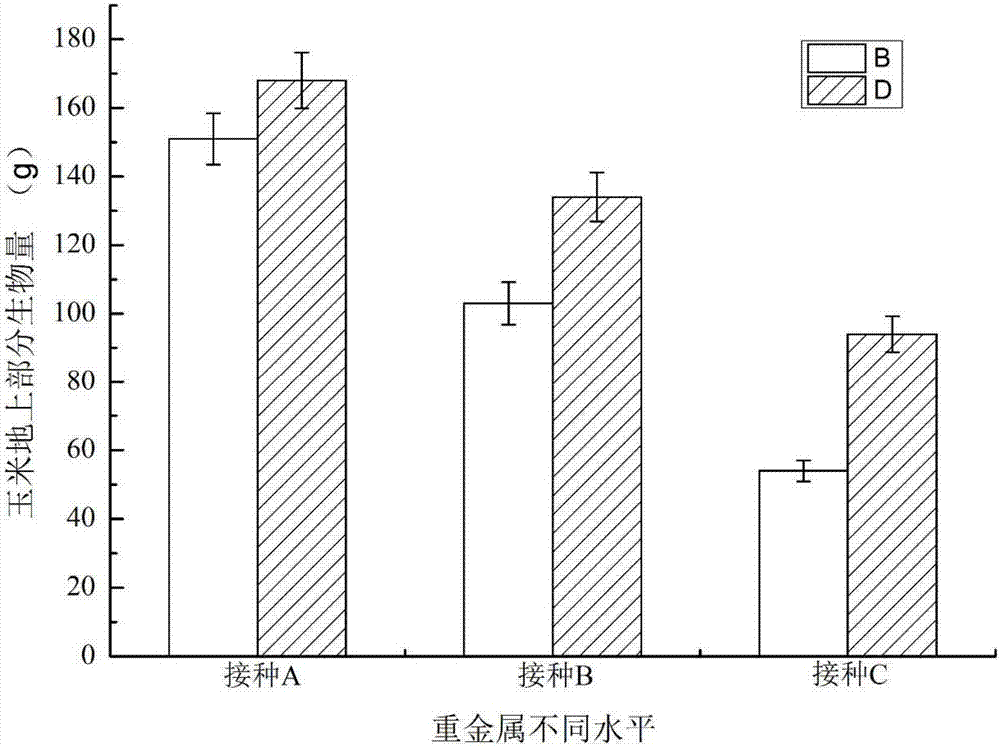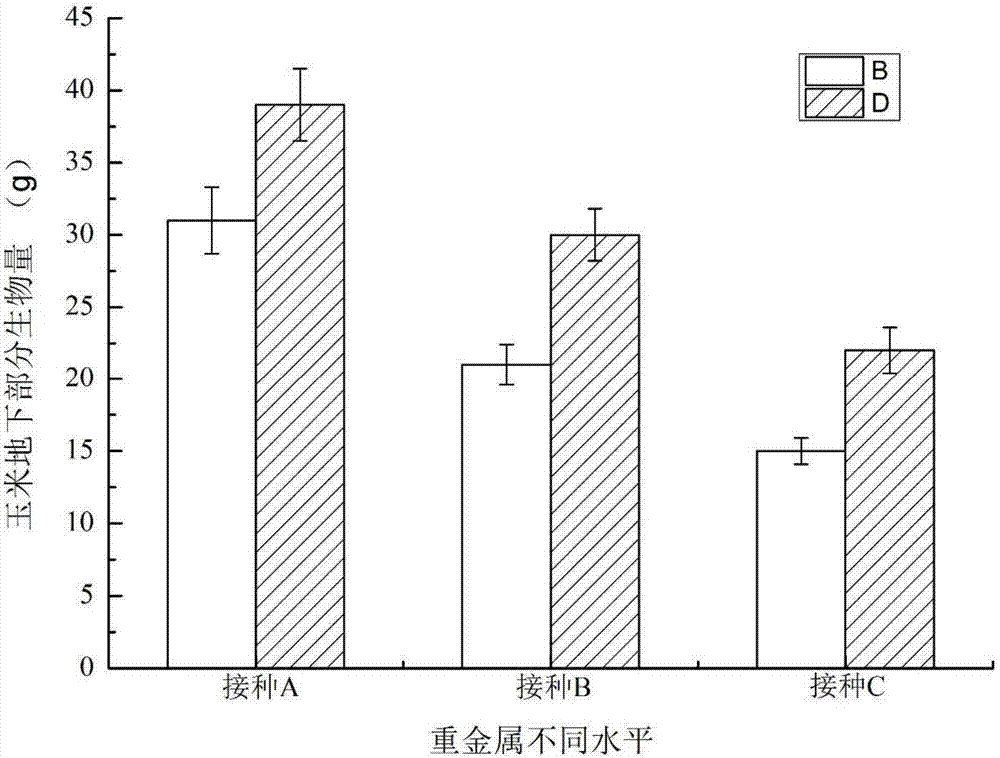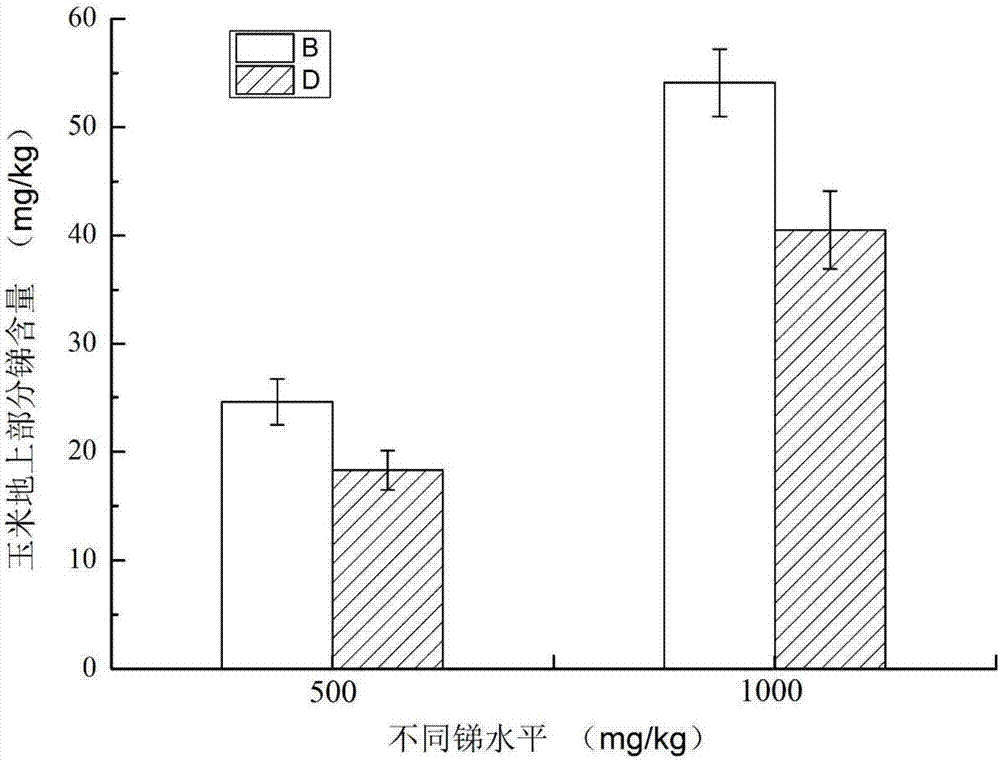Method for plant-microbial remediation of heavy-metal polluted soil
A technology of combined restoration of polluted soil, applied in the field of soil restoration, can solve problems such as unsatisfactory soil restoration effect, soil microbial environment damage, poor plant growth, etc., achieve good restoration effect, shorten restoration period, and reduce heavy metal content Effect
- Summary
- Abstract
- Description
- Claims
- Application Information
AI Technical Summary
Problems solved by technology
Method used
Image
Examples
Embodiment 1
[0050] The method for the microorganism-plant joint remediation of heavy metal-contaminated soil provided in this embodiment comprises the following steps:
[0051] A: Preparation of mycorrhizal fungal inoculants: using sorghum to multiply the Pachymyces mosesi, Rhizocystis interrhizii, Glomus spp. The inoculum amount is 7% (weight ratio) of the propagation substrate, and the propagation time is 30 days to obtain 4 kinds of mycorrhizal fungus inoculants respectively; wherein, the propagation substrate is a sterilized mixture of river sand, vermiculite and soil; Among them, river sand, vermiculite and soil are mixed according to the weight ratio of 2:3:5.
[0052] A 1 : Screen and multiply the beneficial microorganisms in the area to be repaired: collect soil from the area to be repaired, screen and purify the beneficial microorganisms in the repaired area by the plate rapid detection method, and then use the medium to multiply to obtain the beneficial microorganisms in the ar...
Embodiment 2
[0062] The method for the microorganism-plant joint remediation of heavy metal-contaminated soil provided in this embodiment comprises the following steps:
[0063] A: preparation of mycorrhizal fungus inoculant: utilize sorghum to propagate respectively described Phanocystis moxie and Diocystis distortus in the propagation matrix, the inoculum size is 5% (weight ratio) of the propagation matrix, the expansion Propagation time is 30-60 days, obtains 2 kinds of mycorrhizal fungus inoculants respectively; Wherein, described propagation substrate is the sterilized mixture of river sand, vermiculite and soil; Wherein, river sand, vermiculite and soil according to 1:3: 5 weight ratio mix.
[0064] A 1 : Screen and multiply the beneficial microorganisms in the area to be repaired: collect soil from the area to be repaired, screen and purify the beneficial microorganisms in the repaired area by the plate rapid detection method, and then use the medium to multiply to obtain the benef...
Embodiment 3
[0073] The method for the microorganism-plant joint remediation of heavy metal-contaminated soil provided in this embodiment comprises the following steps:
[0074] A: Preparation of mycorrhizal fungal inoculants: using sorghum to multiply the Pachymyces mosesi, Rhizocystis interrhizii, Glomus spp. The inoculum size is 10% (weight ratio) of the propagation substrate, and the propagation time is 30-60 days to obtain 4 kinds of mycorrhizal fungal inoculants respectively; wherein, the propagation substrate is the sterilization of river sand, vermiculite and soil Mixture; wherein, river sand, vermiculite and soil are mixed according to the weight ratio of 2:2:5.
[0075] A 2 : Cultivation of actinomycetes microorganisms: screening and purification of actinomycetes microorganisms by plate rapid detection method. The microorganism of the genus Actinomyces is the genus Frankia. Among them, Frankia sp. ( 33255 TM ), (Accession number: Avcl1, depository unit: American Type Cultur...
PUM
 Login to View More
Login to View More Abstract
Description
Claims
Application Information
 Login to View More
Login to View More - R&D
- Intellectual Property
- Life Sciences
- Materials
- Tech Scout
- Unparalleled Data Quality
- Higher Quality Content
- 60% Fewer Hallucinations
Browse by: Latest US Patents, China's latest patents, Technical Efficacy Thesaurus, Application Domain, Technology Topic, Popular Technical Reports.
© 2025 PatSnap. All rights reserved.Legal|Privacy policy|Modern Slavery Act Transparency Statement|Sitemap|About US| Contact US: help@patsnap.com



